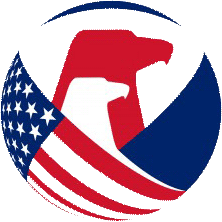The regulation seeks to minimize the risk of child deaths and injuries associated with the use of carriages and strollers, including those related to stability, brakes, restraint systems, latches and folding mechanisms, structural integrity, cords, wheels, and openings of convertible carriage/strollers and multi-positional/adjustable grab bars.
The regulation was originally published at 79 FR 13208 and codified at 16 C.F.R. part 1227. The regulation incorporates by reference ASTM F833, and 16 C.F.R. § 1227.2 identifies the latest Commission-accepted version of ASTM F833 that is mandatory as well as any potential modifications.
Read-only copies of ASTM standards that are incorporated by reference can be viewed at ASTM’s electronic Reading Room.
A carriage is a wheeled vehicle used for the transport of one or more infants, generally in a lying down position. The motive power is supplied by a person pushing or pulling on a handle attached to the vehicle. A carriage may be capable of being folded for storage.
A stroller is a wheeled vehicle for the transport of one or more infants or children generally in a sitting-up or semi-reclined position. The motive power is supplied by a person while pushing on a handle attached to the stroller. A stroller generally is capable of being folded for storage. Strollers normally are used by children from infancy to 36 months of age.
The requirements for carriages and strollers are as follows:
- General requirements
- Sharp points and edges – see also 16 C.F.R. §§ 1500.3(b)(4)(i)(D) and 1500.3(b)(15)(i)(A)
- Small parts – see also our small parts business guidance page
- Surface coatings – see also our lead in paint business guidance page
- Wood parts
- Latching mechanisms
- Openings
- Scissoring, shearing, and pinching
- Exposed coil springs
- Labeling
- Protective components
- Seat recline measurement
- Toys – any toy accessories must meet the applicable requirements for children’s toys
- Cord/strap length
- Tray/grab bar protective covering requirement
- Performance requirements
- Parking brake requirements
- Static load
- Stability
- Restraining system
- Occupant retention
- Car seat/stroller products
- Impact test
- Passive containment/foot opening
- Wheel and swivel assemblies detachment
- Head entrapment with car seat on a stroller or convertible carriage/stroller
For details on the individual requirements, firms should review the latest Commission-accepted version of ASTM F833 as well as any modifications referenced at 16 C.F.R. § 1227.2. Read-only copies of ASTM standards that are incorporated by reference can be viewed at ASTM’s electronic Reading Room.
Yes. There are general requirements for child care articles and durable infant or toddler products that apply:
- Small parts: Products intended for children under 3 years of age must not contain small parts or liberate small parts after use and abuse testing.
- Lead in paint and similar surface coatings: Children’s products must not bear paint and/or similar surface coatings that contain more than 0.009 percent (90 ppm) lead.
- Total lead content: Children’s products must not contain greater than 100 ppm (0.01 percent) of total lead content in any accessible component part.
- Phthalates: Children’s toys and child care articles as defined per 16 C.F.R. § 1307.2 must not contain greater than 0.1 percent (1000 ppm) of any regulated phthalate in any accessible plasticized component part.
- Third-party testing: Children’s products must be tested for compliance to applicable safety rules by a third-party, CPSC-accepted laboratory.
- Certification: Domestic manufacturers or importers of children’s products must generate a Children’s Product Certificate (CPC) certifying compliance with the applicable safety rules and ensures that a CPC accompanies the distribution of the product.
- Labeling: Children’s products must bear distinguishing, permanent marks on the product and any packaging (tracking label) that allow consumers to ascertain certain information. Durable infant or toddler products are required to have product markings in addition to the tracking label. This chart summarizes the specific labeling and registration requirements that durable infant and toddler products must meet.
- Registration form: Durable infant or toddler products must have a product registration form (also known as registration card) permanently attached to the product. There must also be an option to register via a website or, in the absence of a website, via email.

